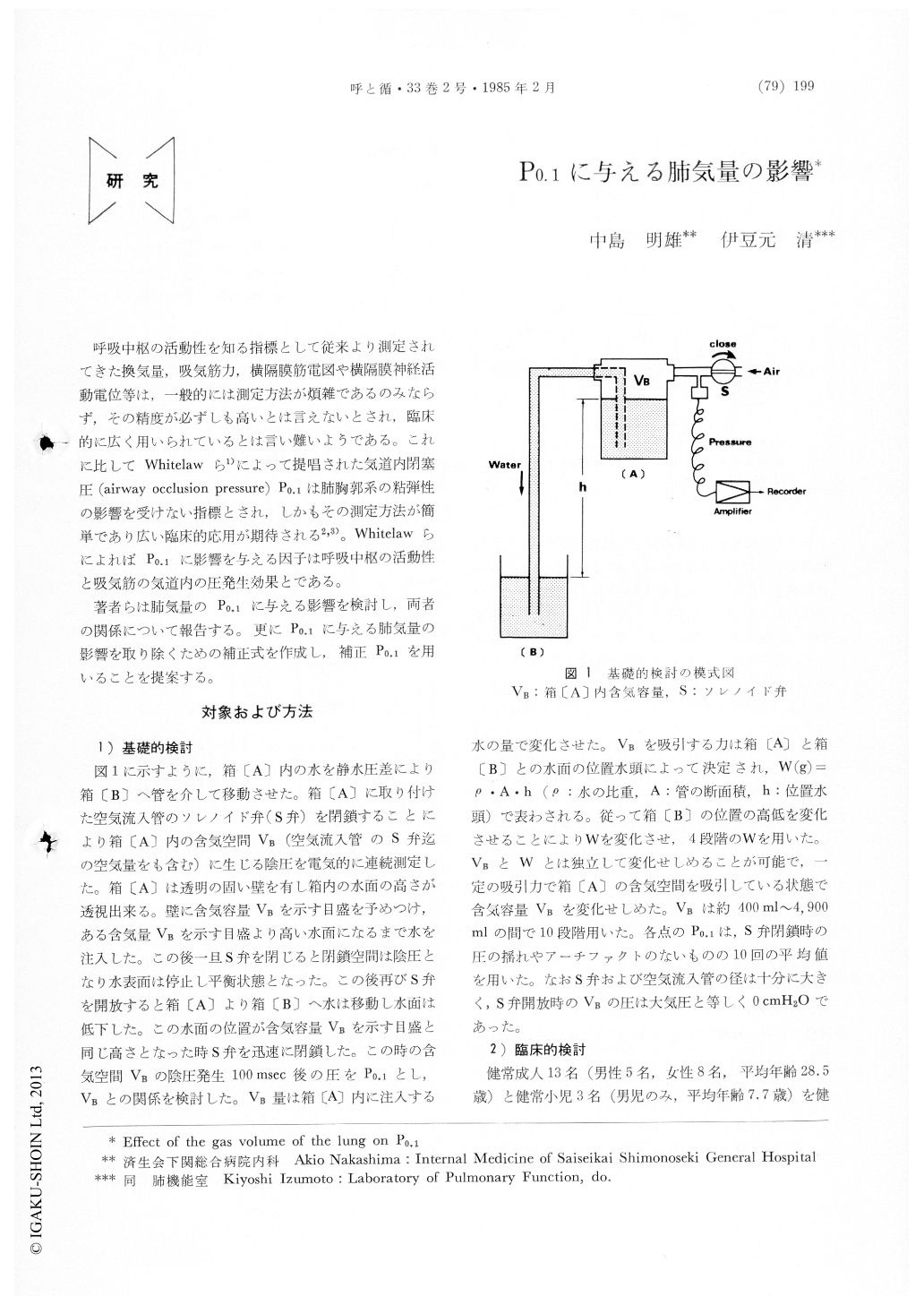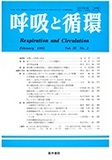Japanese
English
- 有料閲覧
- Abstract 文献概要
- 1ページ目 Look Inside
呼吸中枢の活動性を知る指標として従来より測定されてきた換気量,吸気筋力,横隔膜筋電図や横隔膜神経活動電位等は,一般的には測定方法が煩雑であるのみならず,その精度が必ずしも高いとは言えないとされ,臨床的に広く用いられているとは言い難いようである。これに比してWhitelawら1)によって提唱された気道内閉塞圧(airway occlusion pressure) P0.1は肺胸郭系の粘弾性の影響を受けない指標とされ,しかもその測定方法が簡単であり広い臨床的応用が期待される2,3)。WhitelawらによればP0.1に影響を与える因子は呼吸中枢の活動性と吸気筋の気道内の圧発生効果とである。
著者らは肺気量のP0.1に与える影響を検討し,両者の関係について報告する。更にP0.1に与える肺気量の影響を取り除くための補正式を作成し,補正P0.1を用いることを提案する。
To assess the effect of the gas volume of the lung on measured value of P0.1, a fundamental exper-iment and a clinical examination were performed.
In a experiment under the condition with a graded weight which produced a negative pressure in a closed box containing the air volume of VB, measured P0.1 (m-P0.1) was affected by VB and the relationship between them is expressed as the following : m-P0.1=a+b/VB (a, b; constant) Clinical results also suggest that P0.1 is under the influence of functional residual capacity (FRC) of the lung, and that is independent of the effec-tiveness of inspiratory muscle contraction. In order to exclude, the effect of FRC, we consider that corrected P0.1 (c-P0.1) instead of m-P0.1 should be used for evaluation of the activity of respiratory center.
We would like to offer the following equation to calculate c-P0.1 at constant FRC of 2.9 L, c-P0.1=(18.7×m-P0.1×FRC)/(11×FRC+26)

Copyright © 1985, Igaku-Shoin Ltd. All rights reserved.


